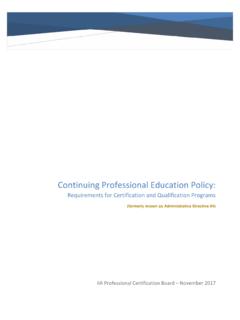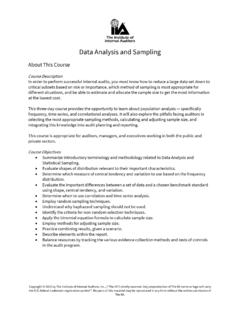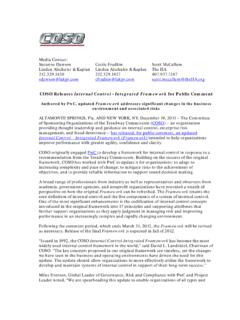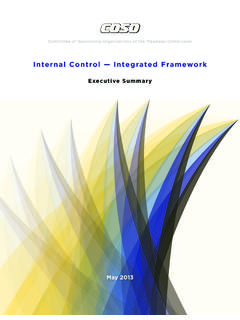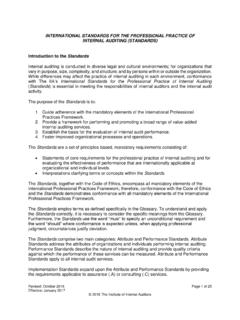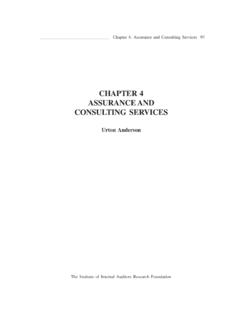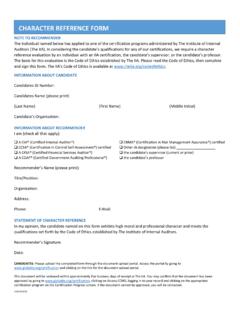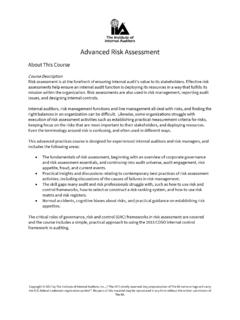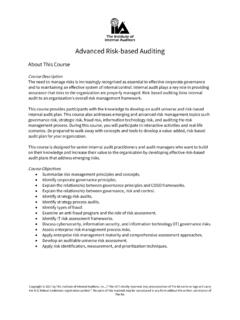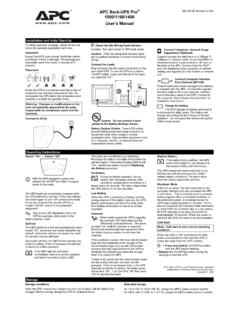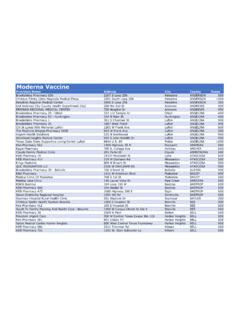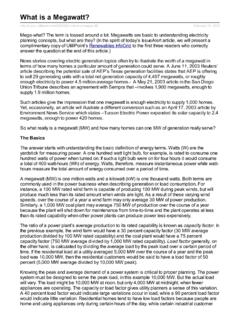Transcription of INTERNATIONAL STANDARDS FOR THE PROFESSIONAL …
1 Issued: October 2008 Revised: October 2012 i 2012 The Institute of Internal Auditors INTERNATIONAL STANDARDS FOR THE PROFESSIONAL PRACTICE OF INTERNAL AUDITING ( STANDARDS ) INTERNATIONAL STANDARDS for the PROFESSIONAL Practice of Internal Auditing ( STANDARDS ) Issued: October 2008 Revised: October 2012 ii 2012 The Institute of Internal Auditors Table of contents Attribute STANDARDS .. 3 1000 Purpose, Authority, and Responsibility.
2 3 1010 Recognition of the Definition of Internal Auditing, the Code of Ethics, and the STANDARDS in the Internal Audit Charter .. 3 1100 Independence and Objectivity .. 3 1110 Organizational Independence .. 4 1111 Direct Interaction with the Board .. 4 1120 Individual Objectivity .. 4 1130 Impairment to Independence or Objectivity .. 5 1200 Proficiency and Due PROFESSIONAL Care .. 5 1210 Proficiency .. 5 1220 Due PROFESSIONAL Care .. 6 1230 Continuing PROFESSIONAL Development .. 7 1300 Quality Assurance and Improvement Program .. 7 1310 Requirements of the Quality Assurance and Improvement Program .. 7 1311 Internal Assessments .. 7 1312 - External Assessments .. 7 1320 Reporting on the Quality Assurance and Improvement Program.
3 8 1321 Use of Conforms with the INTERNATIONAL STANDARDS for the PROFESSIONAL Practice of Internal Auditing .. 8 1322 Disclosure of Nonconformance .. 8 Performance STANDARDS .. 9 2000 Managing the Internal Audit 9 2010 Planning .. 9 2020 Communication and Approval .. 10 2030 Resource Management .. 10 2040 Policies and Procedures .. 10 2050 Coordination .. 10 2060 Reporting to Senior Management and the Board .. 10 2070 External Service Provider and Organizational Responsibility for Internal Auditing .. 10 2100 Nature of Work .. 11 2110 Governance .. 11 2120 Risk Management .. 11 2130 Control .. 12 2200 Engagement Planning .. 13 2201 Planning Considerations .. 13 2210 Engagement Objectives .. 13 2220 Engagement Scope.
4 14 2230 Engagement Resource Allocation .. 14 INTERNATIONAL STANDARDS for the PROFESSIONAL Practice of Internal Auditing ( STANDARDS ) Issued: October 2008 Revised: October 2012 iii 2012 The Institute of Internal Auditors 2240 Engagement Work Program .. 14 2300 Performing the Engagement .. 14 2310 Identifying Information .. 14 2320 Analysis and Evaluation .. 15 2330 Documenting Information .. 15 2340 Engagement Supervision .. 15 2400 Communicating Results .. 15 2410 Criteria for Communicating .. 15 2420 Quality of Communications .. 16 2421 Errors and Omissions .. 16 2430 Use of Conducted in Conformance with the INTERNATIONAL STANDARDS for the PROFESSIONAL Practice of Internal Auditing.
5 16 2431 Engagement Disclosure of Nonconformance .. 17 2440 Disseminating Results .. 17 2450 Overall Opinions .. 17 2500 Monitoring Progress .. 18 2600 Communicating the Acceptance of Risks .. 18 Issued: October 2008 Page 1 of 26 Revised: October 2012 2012 The Institute of Internal Auditors INTERNATIONAL STANDARDS FOR THE PROFESSIONAL PRACTICE OF INTERNAL AUDITING ( STANDARDS ) Introduction to the INTERNATIONAL STANDARDS Internal auditing is conducted in diverse legal and cultural environments; within organizations that vary in purpose, size, complexity, and structure; and by persons within or outside the organization.
6 While differences may affect the practice of internal auditing in each environment, conformance with The IIA s INTERNATIONAL STANDARDS for the PROFESSIONAL Practice of Internal Auditing ( STANDARDS ) is essential in meeting the responsibilities of internal auditors and the internal audit activity. If internal auditors or the internal audit activity is prohibited by law or regulation from conformance with certain parts of the STANDARDS , conformance with all other parts of the STANDARDS and appropriate disclosures are needed. If the STANDARDS are used in conjunction with STANDARDS issued by other authoritative bodies, internal audit communications may also cite the use of other STANDARDS , as appropriate.
7 In such a case, if inconsistencies exist between the STANDARDS and other STANDARDS , internal auditors and the internal audit activity must conform with the STANDARDS , and may conform with the other STANDARDS if they are more restrictive. The purpose of the STANDARDS is to: 1. Delineate basic principles that represent the practice of internal auditing. 2. Provide a framework for performing and promoting a broad range of value-added internal auditing. 3. Establish the basis for the evaluation of internal audit performance. 4. Foster improved organizational processes and operations. The STANDARDS are principles-focused, mandatory requirements consisting of: Statements of basic requirements for the PROFESSIONAL practice of internal auditing and for evaluating the effectiveness of performance, which are internationally applicable at organizational and individual levels.
8 Interpretations, which clarify terms or concepts within the Statements. The STANDARDS employ terms that have been given specific meanings that are included in the Glossary. Specifically, the STANDARDS use the word must to specify an unconditional requirement and the word should where conformance is expected unless, when applying PROFESSIONAL judgment, circumstances justify deviation. It is necessary to consider the Statements and their Interpretations as well as the specific meanings from the Glossary to understand and apply the STANDARDS correctly. The structure of the STANDARDS is divided between Attribute and Performance STANDARDS . Attribute STANDARDS address the attributes of organizations and individuals performing internal auditing.
9 The Performance STANDARDS describe the nature of internal auditing and provide quality criteria against which the performance of these services can be measured. The Attribute and Performance STANDARDS are also provided to apply to all internal audit services. Implementation STANDARDS are also provided to expand upon the Attribute and Performance STANDARDS , by providing the requirements applicable to assurance (A) or consulting (C) activities. Assurance services involve the internal auditor s objective assessment of evidence to provide an independent opinion or conclusions regarding an entity, operation, function, process, system, or other subject matter. The nature and scope of the assurance engagement are determined by INTERNATIONAL STANDARDS for the PROFESSIONAL Practice of Internal Auditing ( STANDARDS ) Issued: October 2008 Revised: October 2012 2 2012 The Institute of Internal Auditors the internal auditor.
10 There are generally three parties involved in assurance services: (1) the person or group directly involved with the entity, operation, function, process, system, or other subject matter the process owner, (2) the person or group making the assessment the internal auditor, and (3) the person or group using the assessment the user. Consulting services are advisory in nature, and are generally performed at the specific request of an engagement client. The nature and scope of the consulting engagement are subject to agreement with the engagement client. Consulting services generally involve two parties: (1) the person or group offering the advice the internal auditor, and (2) the person or group seeking and receiving the advice the engagement client.
